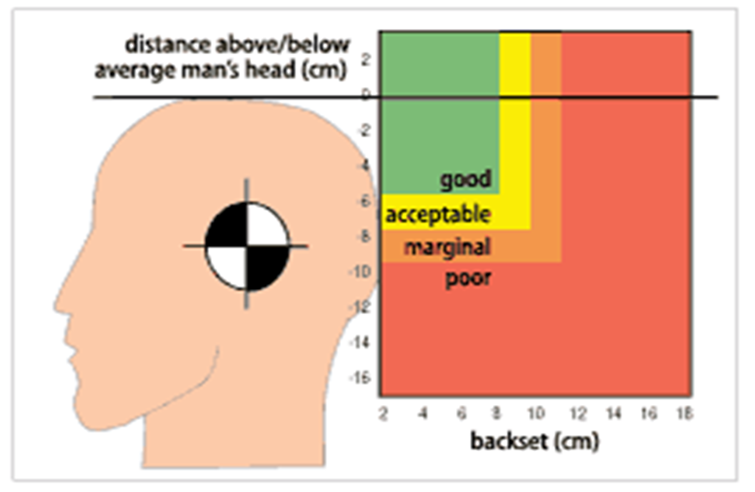What is the S.M.A.R.T-est Way to Achieve New Year’s Resolutions?
Did you make 2020 New Year’s resolutions? Every year, Integrity Chiropractic always sets new goals for excellent patient experiences. A good portion of Americans make resolutions at the start of every year. However did you know that January 17th is known as “Ditch Day.” That is the specific day associated with quitting your New Year’s resolution. So what’s the best way to make your goals achievable?
Today on Ditch Day, Integrity Chiropractic shares statistics on New Year’s resolutions and reveals strategies to ensure success. Additionally, we’ll give tips for increasing your overall health and wellness (which should always be one of your top resolutions).
Research on New Year’s resolutions reveals…
- 40% to 50% of North American adults make one or more resolutions each year.
- The most popular New Year’s resolutions involve weight loss, exercise, quitting smoking, better money management and debt reduction.
Reported Resolution success over time…
- Past the first week: 75% success rate
- Past two weeks: 71% success rate
- After one month: 64% success rate
- After six months: 46% success rate
Looks sad, however, the same research shows people who make resolutions are 10 times more likely to attain their goals than people who don't make resolutions. So, set your sights on making resolutions this year…it’ not too late. No matter what you choose for a resolution, use the S.M.A.R.T. system to improve your odds for success.
S = BE SPECIFIC
You cannot attain what you want without first defining it. Being specific allows you to sharpen your focus. Define your goal with the “W” questions which will also help you to develop a later action plan. With specific focus, your chances for success increase.
- WHO: Who is involved in this goal?
- WHAT: What do I want to accomplish?
- WHERE: Where is this goal to be achieved?
- WHEN: When do I want to achieve this goal?
- WHY: Why do I want to achieve this goal?
M = MEASURE YOUR RESULTS
You need to quantify and measure what you want to achieve. How will you know you are on track for success, or if you’ve achieved your goal if you cannot measure it? Saying that you want to lose weight in 2020 is not a goal, it is a wish. Writing the goal of losing 15 pounds and 3 inches off your waistline is measureable. Being able to measure your achievements also allows you to create smaller milestones on your way to ultimate success.
Integrity Chiropractic tracks & measures every visit with our spinal rehab patients and measures detailed progress every month with re-exams. Integrity Weight Loss tracks & measures multiple parameters on every visit. We’re always tracking and measuring progress. Even small accomplishments are important in delivering positive reinforcement, providing a boost, and allowing for recalibration if needed.
A = ACHIEVABLE
With goal setting, the ultimate purpose is to achieve success in the endeavor. If your sights are set too high, it’s unlikely you’ll ever realize your goal. Furthermore, if goals are set with unachievable expectations, your feelings are more likely to be associated with failure instead of success. Ask pertinent questions and set your goals with a reasonable expectation of achievement, then set new ones after success. And Remember, setbacks are merely opportunities to practice your will power, resolve, and to help regain your focus.
- Is the goal realistic and within reach? If not how should it be modified?
- Is the goal reachable given the time and resources? If now, what resources do I need?
- Are you able to commit to achieving the goal? If you are able, are you willing?
R = RELEVANT and REAL
What makes your resolution meaningful? Is it personal? Do you have a WHY? Goals are more likely to be completed if they are significant to you. What impact will it have on your life or the life of your loved ones in the days, weeks, months or years ahead? When you connect your goal with its value, you’re more likely to invest the time and energy to make the goal happen.
Example: Having regular chiropractic adjustments not only makes me feel good,
but improves the overall quality of my life!
T = TIME SENSITIVE
Do you have a timeline for attainment? Defining a specific time frame for accomplishment slashes procrastination and creates a sense of urgency. This year, make one of your resolutions to take good care of your mind and body. Every intention you set for 2020 will work better when you enjoy good health.
Example: Starting this week, I will see Dr. Leatherman or Dr. Bak at Integrity Chiropractic, 2X’s every month, on Wednesdays, for the next 12 months to help maintain optimum spinal health.
Example: Starting this week, I will see Dr. Sarah Leatherman at Integrity Weight Loss, every week for the next 4 months. I will lose 40lbs and 3 inches off my waist in the next 4 months.
Seven steps to improve your overall health and help with goal/resolution attainment
- Get regular chiropractic adjustments – research has been published supporting that 2x per month is a great wellness frequency for those who don’t need intensive active spinal rehab plans.
- Exercise regularly – movement prolongs the life of all bodily systems. Movement is LIFE.
- Eat a healthy – fresh fruits and vegetables, lean proteins and healthy fats are a must.
- Drink water – 50% of your body weight in fluid ounces daily. The body consists of 65% water.
- Think positive – good thoughts lead to good feelings, good feelings contribute to good health, and positive thinking has been proven to re-wire your brain for success and health.
- Sleep 7-9 hours per night – sleep is restorative and healing for all systems of the body.
- Practice gratitude – Focus on being happy. Start by appreciating what you have now. Then, look forward to your New Year’s resolution as a means to enhance your life!
References:
- https://www.usatoday.com/story/news/nation/2019/01/16/thursday-january-17-day-most-new-years-resolutions-fail/2539402002/
- Norcross JC, Mrykalo MS, Blagys MD. Auld Lang Syne: Success predictors, change processes, and self-reported outcomes of New Year’s resolver sand non resolvers. Journal of Clinical Psychology 2002; 58(4):397-405.
- https://www.mindtools.com/pages/article/smart-goals.htm
- A theoretical basis for maintenance spinal manipulative Therapy for the chiropractic profession Journal of Chiropractic Humanities December 2011; Vol. 1; No. 1; pp.74-85: David N. Taylor DC, DABCN
- Original Research Frequency & Duration of Chiropractic Care for Headaches, Neck and Upper Back Pain. John K Maltby, DC Bio, Donald D. Harrison, Ph.D, DC, MSE Bio, Deed Harrison, DC Bio Joseph Betz BS, DC Bio, Joseph R. Ferrantelli BS, DC Bio Gerard W. Clum, DC Bio [August 21, 2008, pp 1-12] Journal of Vertebral Subluxation Research
- https://www.webmd.com/diet/features/water-for-weight-loss-diet#1
- https://www.sleepfoundation.org/press-release/national-sleep-foundation-recommends-new-sleep-times









